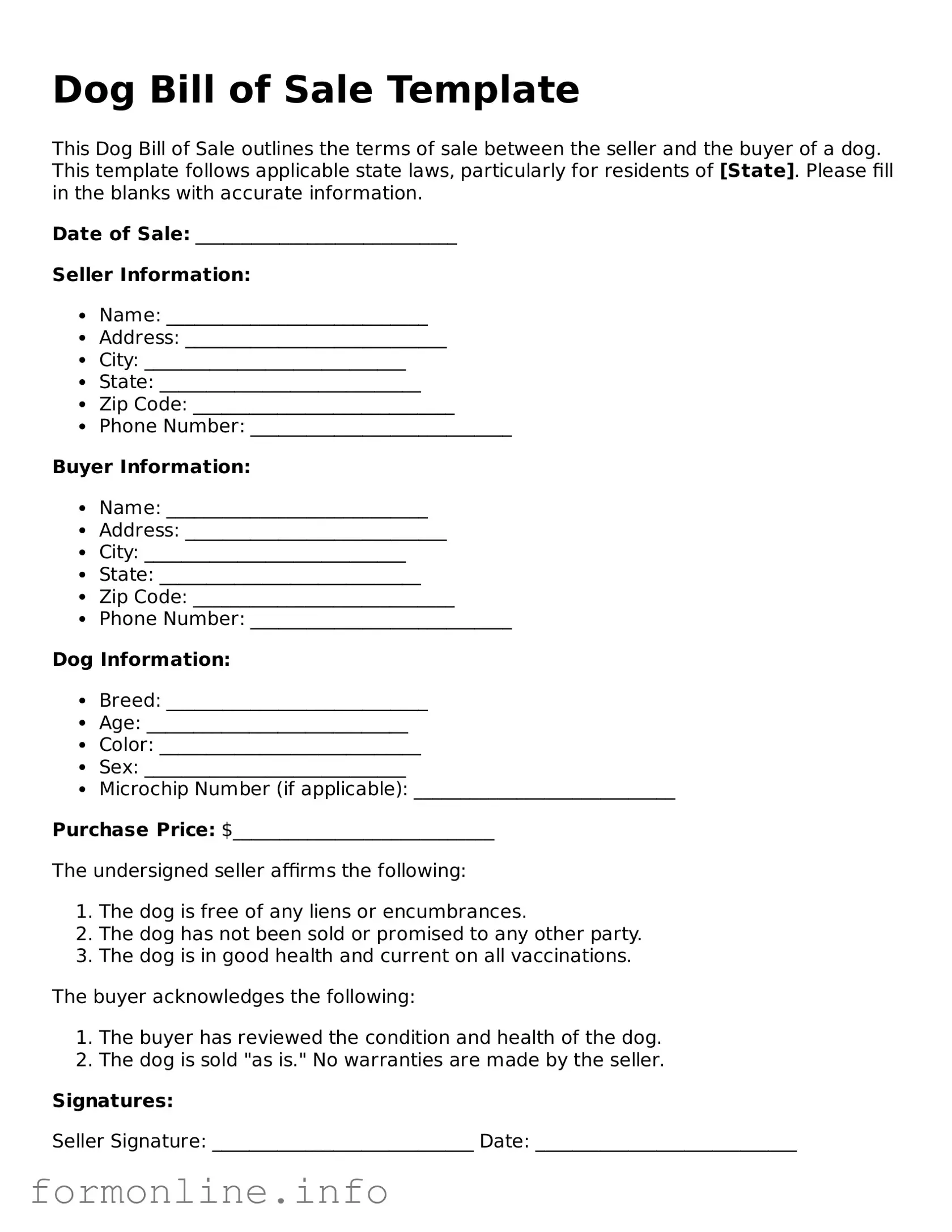Dog Bill of Sale Template
This Dog Bill of Sale outlines the terms of sale between the seller and the buyer of a dog. This template follows applicable state laws, particularly for residents of [State]. Please fill in the blanks with accurate information.
Date of Sale: ____________________________
Seller Information:
- Name: ____________________________
- Address: ____________________________
- City: ____________________________
- State: ____________________________
- Zip Code: ____________________________
- Phone Number: ____________________________
Buyer Information:
- Name: ____________________________
- Address: ____________________________
- City: ____________________________
- State: ____________________________
- Zip Code: ____________________________
- Phone Number: ____________________________
Dog Information:
- Breed: ____________________________
- Age: ____________________________
- Color: ____________________________
- Sex: ____________________________
- Microchip Number (if applicable): ____________________________
Purchase Price: $____________________________
The undersigned seller affirms the following:
- The dog is free of any liens or encumbrances.
- The dog has not been sold or promised to any other party.
- The dog is in good health and current on all vaccinations.
The buyer acknowledges the following:
- The buyer has reviewed the condition and health of the dog.
- The dog is sold "as is." No warranties are made by the seller.
Signatures:
Seller Signature: ____________________________ Date: ____________________________
Buyer Signature: ____________________________ Date: ____________________________
This document serves as a record of the sale and should be retained by both parties for their records.
